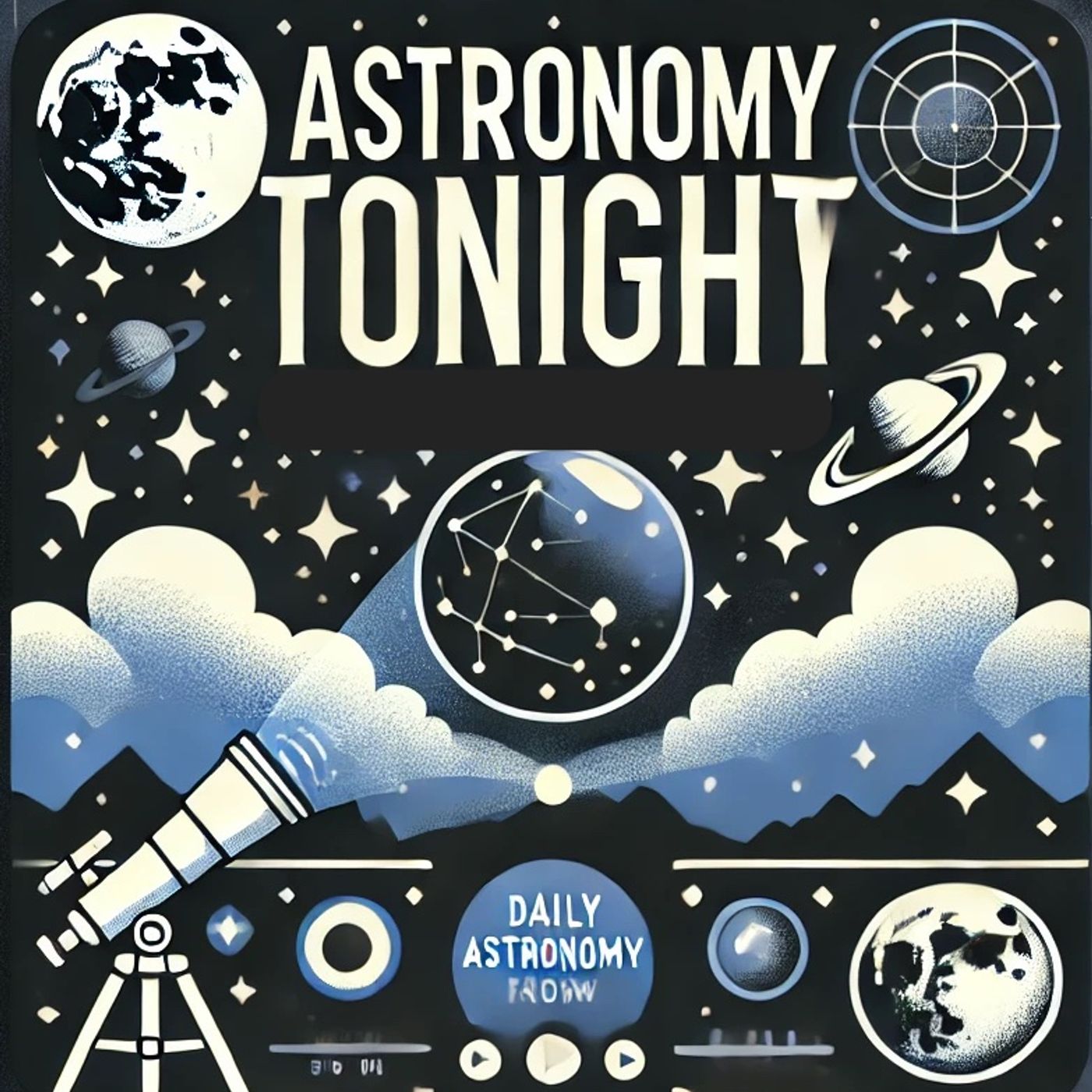Saturn's Dark Line: Bond's Celestial Discovery
Update: 2025-09-20
Description
This is your Astronomy Tonight podcast.
On this day, September 20th, in the year 1848, the American astronomer George Phillips Bond made a groundbreaking discovery that would forever change our understanding of Saturn's rings. While observing the gas giant through the 15-inch Great Refractor telescope at Harvard College Observatory, Bond noticed a faint, dark line cutting through Saturn's bright rings. This gap, later named the Cassini Division after the Italian astronomer Giovanni Cassini who had observed it earlier, was a revelation that sparked intense scientific interest.
Imagine the excitement in the observatory that night! Bond, with his keen eye and steady hand, sketched what he saw, probably sipping on lukewarm coffee to stay alert in the wee hours. Little did he know that his observation would lead to centuries of fascination with Saturn's ring system.
The Cassini Division, we now know, is a 4,800-kilometer-wide gap between Saturn's A and B rings. It's not entirely empty, but contains tenuous, dusty material. The division is caused by a gravitational resonance with Saturn's moon Mimas, which keeps the area relatively clear of larger particles.
Bond's discovery opened up a whole new field of study in planetary science. It challenged the notion that planetary rings were solid disks and paved the way for future missions like Cassini-Huygens, which would reveal the intricate structure and dynamics of Saturn's rings in stunning detail.
So the next time you look up at the night sky and spot Saturn, remember George Phillips Bond and his exciting discovery on this very day, 177 years ago. It just goes to show that in astronomy, a single night's observation can lead to a lifetime of wonder and exploration.
And with that celestial tidbit, we wrap up today's episode. If you enjoyed this cosmic journey through time, please don't forget to subscribe to the Astronomy Tonight podcast. For more fascinating stories and information, check out QuietPlease.AI. Thank you for listening to another Quiet Please Production. Keep looking up, space fans!
This content was created in partnership and with the help of Artificial Intelligence AI
On this day, September 20th, in the year 1848, the American astronomer George Phillips Bond made a groundbreaking discovery that would forever change our understanding of Saturn's rings. While observing the gas giant through the 15-inch Great Refractor telescope at Harvard College Observatory, Bond noticed a faint, dark line cutting through Saturn's bright rings. This gap, later named the Cassini Division after the Italian astronomer Giovanni Cassini who had observed it earlier, was a revelation that sparked intense scientific interest.
Imagine the excitement in the observatory that night! Bond, with his keen eye and steady hand, sketched what he saw, probably sipping on lukewarm coffee to stay alert in the wee hours. Little did he know that his observation would lead to centuries of fascination with Saturn's ring system.
The Cassini Division, we now know, is a 4,800-kilometer-wide gap between Saturn's A and B rings. It's not entirely empty, but contains tenuous, dusty material. The division is caused by a gravitational resonance with Saturn's moon Mimas, which keeps the area relatively clear of larger particles.
Bond's discovery opened up a whole new field of study in planetary science. It challenged the notion that planetary rings were solid disks and paved the way for future missions like Cassini-Huygens, which would reveal the intricate structure and dynamics of Saturn's rings in stunning detail.
So the next time you look up at the night sky and spot Saturn, remember George Phillips Bond and his exciting discovery on this very day, 177 years ago. It just goes to show that in astronomy, a single night's observation can lead to a lifetime of wonder and exploration.
And with that celestial tidbit, we wrap up today's episode. If you enjoyed this cosmic journey through time, please don't forget to subscribe to the Astronomy Tonight podcast. For more fascinating stories and information, check out QuietPlease.AI. Thank you for listening to another Quiet Please Production. Keep looking up, space fans!
This content was created in partnership and with the help of Artificial Intelligence AI
Comments
In Channel





